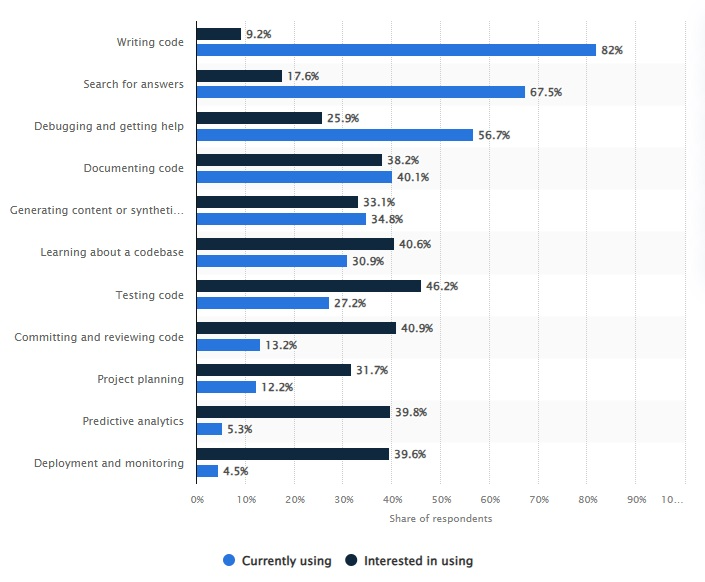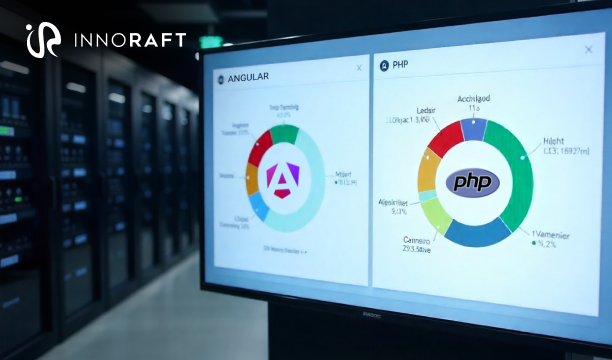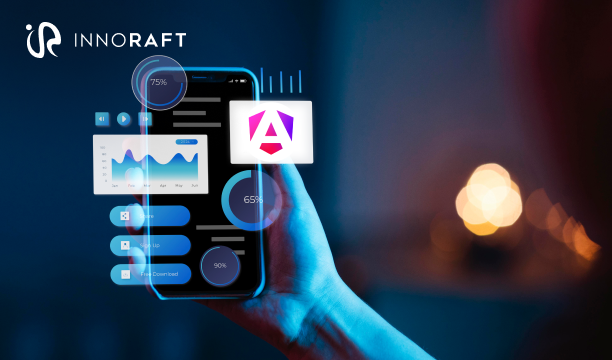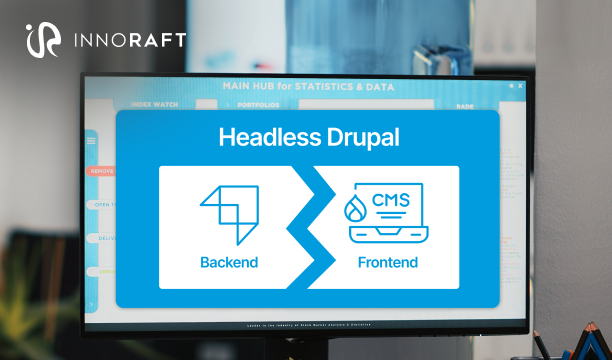The internet has evolved into a realm of creativity, enterprise, and connections, and a resource for information discovery. Every year, we observe significant changes in web development. The future of web development has never looked better. The power of HTML5 websites, combined with the enormous potential of AI and ML, has provided web developers with new tools for creating immersive web pages and applications.
Evolving user expectations influenced the web development process. People are starting to expect supercharged mobile sites that load quickly. They expect a consistent user experience across all platforms, with no drawbacks to switching between desktop and mobile pages.
If you are involved with the web development sector and want to remain ahead of the competition, you must keep up with the latest web development trends.
Top Web Development Trends Shaping the Future
Globally, in 2024, a data survey indicated that more than 38% of developers are looking for web development skills, keeping it one of the most in-demand technology skills. Indeed, web development and design are rapidly scaling, making it hard sometimes to catch up with emerging trends.
To keep you informed about the latest web development trends, we have compiled several key trends that currently shape the contemporary digital playground.
Progressive Web Apps (PWAs)
Progressive web app development services have turned out to be the talk of the town among ecommerce technologies, as they provide users with web-centred experiences backed by the performance of native apps. App-like speed, efficacy, always-on functionality, and native-like seamless experience make them a boon to organizations striving toward maximizing customer satisfaction.
The growth of PWAs can likely be attributed to the substantial increase in mobile e-commerce. With global mobile commerce sales expected to reach approximately $2.5 trillion in 2025, customers accustomed to the speed and convenience of native apps will demand the same from mobile websites. Consequently, a significant number of businesses will start to incorporate this technology into their mobile web interfaces.
AI Capabilities
AI is set to revolutionize web development. AI chatbots can enrich customer service, while machine learning can personalize website content by analyzing user behavior. Generative AI, which produces text and visual content based on prompts, stands out as a transformative technology. In web development, it can boost productivity and code quality.
Key AI Applications in Web Development:

Source: Statista
- Code Generation: A 2024 study revealed that 82% of web developers already use AI for code writing.
- Information Retrieval: Around 67% of developers leverage AI to find answers.
- Debugging and Code Assistance: More than 56% utilize AI for debugging and code support.
AI tools with Natural Language Processing (NLP) understand developer queries and quickly generate code snippets, reducing errors. Furthermore, AI can expedite testing and debugging by identifying patterns and common mistakes, saving time and resources.
Accessibility
Delivering inclusive digital experiences is now an imperative, not a choice. Developers are adopting accessibility standards to ensure that websites and applications operate for everyone, including people with visual, aural, or physical impairments. In 2025, semantic HTML, ARIA roles, and automated accessibility testing tools will be widely used to evaluate and improve accessibility.
Performance and Optimization
Users desire lightning-fast digital experiences. Thus, performance optimization is critical. Lazy loading, image compression, code splitting, and adopting performance-focused frameworks (such as Next.js and Astro) can all assist developers in achieving Core Web Vitals and SEO requirements. Web performance and optimization emphasize boosting website speed, efficiency, and user experience, utilizing strategies such as PWAs, Serverless Architecture, and voice search optimization.
Offline Availability
While offline-first interactions are becoming increasingly important, particularly for mobile users in low-connectivity locations, not all PWA development services need to support offline utilization. When offline features are provided, users may easily interact with applications and websites even when they cannot access the internet. This enhances the user experience and accessibility, especially in locations with poor or inconsistent networks.
Serverless Architecture
Serverless architecture leverages cloud technology to manage computational resources and handle user requests without the need for backend server configuration or maintenance. By dynamically allocating resources based on demand, this approach reduces infrastructure costs and eliminates the need for idle server time.
Benefits of Serverless Architecture
- Cost Efficiency: Pay only for the resources used, eliminating expenses associated with idle server time.
- Scalability: Automatically scales resources in response to demand, effortlessly handling traffic spikes.
- Faster Development: Eliminates the need for server or infrastructure management, allowing developers to focus on code and accelerate development.
Enhancing User Experience with Motion UI
Motion UI frameworks are front-end technologies that can add visual and interactive elements to websites and applications, making them more engaging and appealing. These elements include animations and transitions such as hero image animations, website element sliders and transitions, gallery carousels, scrolling effects, and loading graphics.
Besides larger animations, micro interactions—such as button hovers, toggle switches, and subtle feedback animations—are critical in improving user experience. These modest, intentional motions guide users, offer feedback, and make interactions natural and intuitive. The use of motion UI creates an interactive user experience, which is key to capturing and retaining a visitor's attention, making it a valuable tool in modern web design services.
3D Design
It provides immersive and interactive experiences using 3D visuals and models to create a more engaging web presence. Consider the user examining a 3D product, rotating it, zooming in on details, and modifying its features from their web browser. Such a level of engagement and immersion promotes a stronger relationship with the brand, resulting in a more customized experience.
Web designers can now build realistic, hyperrealistic 3D models, images, and features that easily integrate into websites through technological breakthroughs such as WebGL, Three.js, and AI-driven rendering.
Single-Page Applications (SPAs)
Single page applications have emerged as a prominent role in web development. SPAs improve user experience by making content dynamic, and it happens on a single page without page reloading. The process benefits site owners and users equally. On the one hand, SPAs make the development process more oriented; SPAs provide users with a smooth and effective user experience by removing the necessity of traversing multiple pages to access information. In the current digital world, where users demand fast and easy access to information, SPAs are essential to fulfill those demands.
AR & VR Revolution
User interface (UI) design is changing rapidly, influenced by developments in augmented reality (AR), and virtual reality (VR). These technologies are likely to make websites and apps more interactive and user-friendly.
- AR-Enhanced Web Experiences: AR is revolutionizing websites by overlaying digital content onto the real world. This enables interactive product visualizations and gamified interfaces, creating a more engaging user experience.
- VR-Driven Platforms: VR is pushing the boundaries of possibility across various industries. By offering fully immersive environments, VR is transforming gaming, education, real estate, and other sectors.
Voice Search Optimization
With over 50% of adults using voice search daily, there are over 1 billion voice searches happening every month. These intelligent assistants boast a 93.7% accuracy rate when answering search queries. Users can search for information, set reminders, and make phone calls, all without typing.
Developers can increase user engagement by integrating voice search optimization through voice recognition and digital assistants. By tailoring website content to match common user questions and phrases and optimizing for conversational language, developers can offer personalized results and recommendations.
Cybersecurity and Data Protection
Developers need to take a security-first approach to comply with GDPR and respect users' privacy and data protection. Key measures include integrating privacy and compliance requirements into code architecture and using security APIs to encrypt sensitive data, monitor network security, and enforce incident response. Concentrating on the aforementioned guidelines requires an emphasis on anonymization techniques, consent management systems, and anti-theft systems.
Streamlining Integrations with API-First Development
Application Programming Interfaces (APIs) represent a set of rules and protocols that disparate software applications use to communicate with each other. API-first development emphasizes working on APIs first so that frontend components are integrated seamlessly into backend systems.
While certain website builders and plugins make API integration easier for non-developers, using APIs often requires a fundamental grasp of how systems interact. So, while you don't always have to write code, it's not entirely code-free.
Delivering Content at Scale with Headless Commerce
Headless architecture is a flexible model that can be applied across industries depending on project needs and complexity. In a headless commerce setup, the front-end presentation layer is decoupled from the back-end logic, allowing brands to deliver content across multiple touchpoints like mobile apps, desktops, and in-store kiosks. While this approach once required costly custom builds, modern platforms like WordPress now offer headless CMS capabilities. These integrate easily with Content Delivery Networks (CDNs), enabling faster, more consistent content delivery across channels, making it ideal for scaling personalized digital experiences.
Conclusion - Embracing the Future of Web Development
It is essential to keep yourself updated with the latest developments in web design and development. With the pace established by 2025, new technologies and customers' expectations are turning the digital world on its head and opening new frontiers. Flexibility and innovation have been the keywords for businesses and developers alike during this time. By opting for these trends, any company can take a leading step into the revolutionized world.
Innoraft provides web development services to assist businesses in their journey through this constantly changing landscape. Whether industry veterans or fresh-born entrepreneurs, keeping abreast of market happenings will be their game-changer in 2025 and beyond. Our professionals help breathe life into your idea with world-class development skills and strategic insights for this market.
Join us as we shape the future of web development together.
FAQ
Frequently Asked Questions
Didn’t find what you were looking for here?




